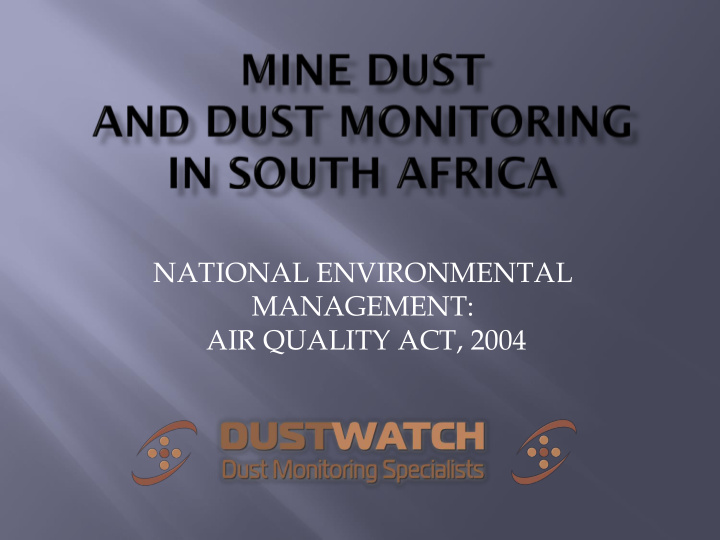



NATIONAL ENVIRONMENTAL MANAGEMENT: AIR QUALITY ACT, 2004
These have been promulgated in response to the requirements of the act and lay out measures that need to be followed by any monitoring programme. The regulations outline a standard which should be used in South Africa. The regulations describe conditions under which monitoring is required, as well as the reporting format.
The regulations call for the ASTM D1739 - 70 test method to be used although there is confusion why later versions are not called for as these differ significantly in concept and the 2004 and 2010 re-approved versions superseded the 1970 version.
Only later versions of the ASTM call for wind guard units and not the 1970 version.
As the regulation makes no distinction between your dust and that from elsewhere you are blamed for all the dust at your monitor, by assumption, which is incorrect. Ambient dusts from all over, form part of the dust at your property. By analysing the dust, you have a case against high levels so that you can defend yourself.
With any single sample monitor you will need to do a content analysis if you are to defend yourself. We will now look at some examples of dust particles found in fallout or dustfall samples.
Mineralised copper material dust particles
Ilmenite particles with high diesel smoke particulate in a sample from Gabon
Aragonite calcite crystalline fibres 4 micron diameter and a length of over 30 micron
Fine rounded milled clays with calcite, smoke carbon and quartz rounded sandy dusts
As a cost effective assessment of contents, the MicroScan method can determine qualitatively (estimate) the Contents of the geology and makeup of the sample including organic materials; average d0.5 particle size of either the whole sample or constituents of the sample; A sample image can be taken which then indicates the content. Unusual contents and organic insects can be logged for biodiversity purposes.
Mineralised copper present in a particulate sample from a lead concentration plant
Rounded sandy dust particulates which are not all mine dusts
Specimen of length 55 micron fly from Mozambique
Specimen louse 28 micron long
As the various associated companies prepare their own reports, these are fixed format documents and will incorporate MicroScan reports where these are required. MicroScans are being carried out on samples from around the world at the rate of nearly 2000 per month.
NatureBound is a specialist company which has a long association with DustWatch and together with other companies, covers areas of South Africa that DustWatch cannot service directly.
An example of living trilobite sub-micron organisms. A unique find, this is 11 micron in length (In our Opinion)
An organic cactus fibre cluster with a single loose fibre
A partly combusted jet fuel droplet in a dry dust sample.
Bacterial mould attacking insect debris
First generation DustWatch unit now 15 years old. Replaced with Single bucket D1739 – 98 (Reapproved 2010) unit in 2015.
Monitors used in different applications
DustWatch unit in Northern Botswana
We thank you for your attention and hope that you enjoyed this presentation. The contact persons at DustWatch cc 083 308 4764 (Gerry Kuhn) 082 875 0209 (Chris Loans) gerry@dustwatch.com chris@dustwatch.com
Recommend
More recommend